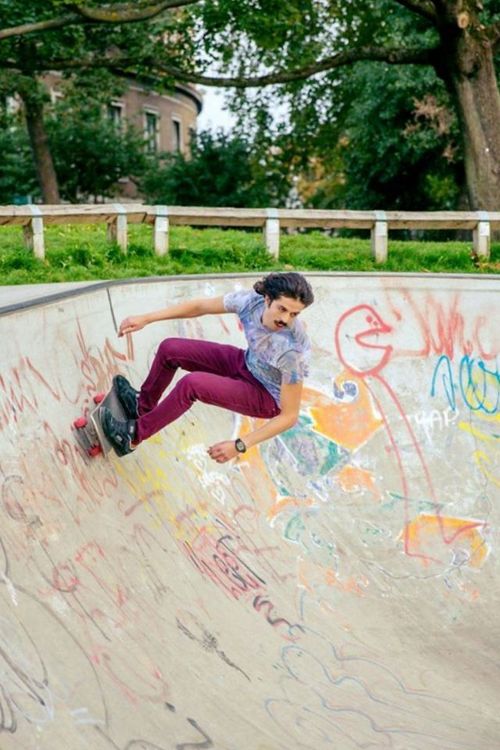The Alexander Technique is Not Just About Sitting and Standing!
Although the Alexander Technique is well known for helping people with their poise and their backs, and in particular for using the Lying Down Procedure, the Technique can also help us move more mindfully in a wide range of activities. Many professional dancers, musicians and sports people use the AT whilst performing, for instance. I wish I had learned the Technique when I was working as a ballet dancer – I know it would have helped me in many ways!
Clissold Park Skatepark
This young man has kindly allowed me to use this great photo of him. He has not had AT lessons but using a skateboard demands that he has good balance, poise, co-ordination and a flexible body-use – all aspects of movement which can be enhanced and refined through learning the AT.
Interestingly, as he swoops around the skatepark, he is using a very active version of what we call monkey position (although I like to use the term ‘monkey movement’ to avoid people holding a position with rigidity). The young man has his legs bent and flexed at the hip joints with the torso angled forwards and this gives him an excellent base from which to balance, as he constantly re-adjusts himself over the fast-moving skateboard. You can also see how he is leading into his movements with his eyes and head, whilst maintaining a lengthened spine.
This way of using the body in order to bend forwards, is an important procedure which we learn to use in AT lessons, although we mainly align the head and neck forwards and away from the spine for most activities, rather than having it turned around, as the skateboarder has to do in order to see where he is going.
As an Alexander Technique teacher, I use variations of this movement constantly whilst I am teaching, so that I can bend forwards towards my pupils whilst protecting my own back, particularly when I need to reach over someone who is lying on the AT table in semi-supine. F M Alexander used to call this ‘the position of mechanical advantage’ which it definitely is – but his student teacher trainees were very quick to rename it as ‘monkey position’.
This way of using our bodies can also be used in more mundane ways, with small versions of this monkey-like movement being very useful when chopping vegetables or bending forwards to clean our teeth!
Want to try out the AT? Individual lessons are available on a regular basis.
